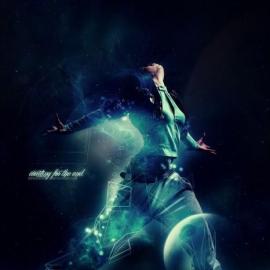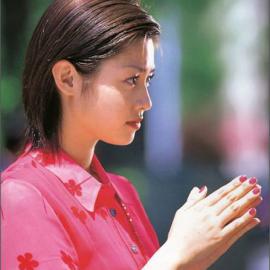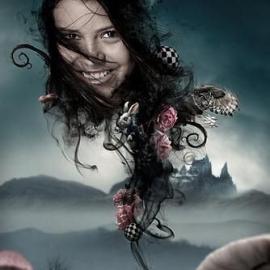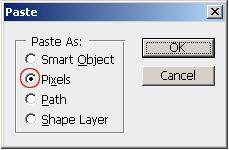迪士尼动画家的30项建议
原文:
1. Don’t illustrate words or mechanical movements. Illustrate ideas or thoughts, with the attitudes and actions.
2. Squash and stretch entire body for attitudes.
3. If possible, make definite changes from one attitude to another in timing and expression.
4. What is the character thinking?
5. It is the thought and circumstances behind the action that will make the action interesting.
Example: A man walks up to a mailbox, drops in his letter and walks away.
OR
A man desperately in love with a girl far away carefully mails a letter in which he has poured his heart out.
6. When drawing dialogue, go for phrasing. (Simplify the dialogue into pictures of the dominating vowel and consonant sounds, especially in fast dialogue.
7. Lift the body attitude 4 frames before dialogue modulation (but use identical timing on mouth as on X sheet).
8. Change of expression and major dialogue sounds are a point of interest. Do them, if at all possible, within a pose. If the head moves too much you won’t see the changes.
9. Don’t move anything unless it’s for a purpose.
10. Concentrate on drawing clear, not clean.
11. Don’t be careless.
12. Everything has a function. Don’t draw without knowing why.
13. Let the body attitude echo the facial.
14. Get the best picture in your drawing by thumbnails and exploring all avenues.
15. Analyze a character in a specific pose for the best areas to show stretch and squash. Keep these areas simple.
16. Picture in your head what it is you’re drawing.
17. Think in terms of drawing the whole character, not just the head or eyes, etc. Keep a balanced relation of one part of the drawing to the other.
18. Stage for most effective drawing.
19. Draw a profile of the drawing you’re working on every once in a while. A profile is easier on which to show the proper proportions of the face.
20. Usually the break in the eyebrow relates to the highpoint of the eye.
21. The eye is pulled by the eyebrow muscles.
22. Get a plastic quality in face ― cheeks, mouth and eyes.
23. Attain a flow thru the body rhythm in your drawing.
24. Simple animated shapes.
25. The audience has a difficult time reading the first 6-8 frames in a scene.
26. Does the added action in a scene contribute to the main idea in that scene? Will it help sell it or confuse it?
27. Don’t animate for the sake of animation but think what the character is thinking and what the scene needs to fit into the sequence.
28. Actions can be eliminated and staging "cheated" if it simplifies the picture you are trying to show and is not disturbing to the audience.
29. Spend half your time planning your scene and the other half animating.
30. How to animate a scene of a four-legged character acting and walking: Work out the acting patterns first with the stretch and squash in the body, neck and head; then go back in and animate the legs. Finally, adjust the up and down motion on the body according to the legs.
译文:
1.不要以文字式单调的机械式动作来表现动画,要以生动的大表情,大动作来表现动画
2.任何有关挤压或是延伸的动作要以全身(整体)来完成动画的表现
3.如果可能的话尽量已明确的时序及表情来完成一个动作至另一个动作的改变
4.思考角色特性的构想是什么?
5.在表达一个动作的背后,需将情绪与状态突显出来,才能有效的让动作趣味化
6.当在绘制对白的表达时,应以词组为主。(简化对白的对应图形,以元音及调和的声音来支配即可,特别是在快速的对话状态下)
7.在对白音效呈现前先让身体的动作提前4个单元格,但在对嘴的时序上仍是一致的
8.在表情上的改变及主要的对白声音音调,皆是制造趣味性的关键点;但还是必须尽可能在一个动作内完成它。如果头部的动作太多,将无法将无法看到有趣的动作发生
9.不要去轻易的去移动任何东西,除非那是具有目的性的才可以
10.必须将图绘的很清晰,而不是干净而已
11.不要有漫不经心的绘图态度
12.每一件事物,都有一个功用或功能,不要不知道为何功能,目的及主题就随便下笔描绘
13.让身体所呈现的每一个特定动作,都能响应至脸部表情上
14.藉由草绘及尝试各种可能的方法,来完成最佳的图案绘制
15.在一个特定的动作中,仔细分析角色的特性,必须在最佳的表达区间内显示挤压及延伸的动作。但必须保持区间内动作的简单化
16.你所正在绘制的图像,必须是你所构思想象的图像
17.在绘制整个角色特性时,不应重视头部,眼睛或是嘴巴的表达,而是必须保持在绘制其它图形时,维持每一部位间彼此平衡的关系
18.舞台上所呈现的,一定是要最好的绘制成果
19.在每一次绘制作业中,必须要完成轮廓线的制作,因为绘制轮廓线较容易去显示脸的比例大小是否正确
20.通常眼睛和眉毛之间的断开处是和眼睛的高度点有关
21.眼睛的动作是由眼,眉毛的肌肉所拉动而影响
22.将脸上的颊,嘴及眼,能以极富弹性的品质来表达
23.将特性主角的身体,以非常富节奏的流畅感绘制出来
24.把动画的形状简单化
25.通常观众在一开始的前6~8格画面,较难去阅读影片中的文字及内容
26.是否外加的动作能充分表达出该场景主要的想法?是否更能衬托出?还是会产生误解?
27.不要为了动画缘故而勉强使其动作,应考量角色正在构思的是什么?及该以什么样的场景气氛来符合该动画的流程
28.如果动画过于简化了一些该有的动作,而这些动作正式你想表达的,则不可以轻易将该有的动作删除,否则无法有效的将动作的想法传达给观众
29.将一半的时间用在场景规划上,而另一半时间则全力投动画制程上
30.如何将场景中的四足动物主角做动作及走路动画?
首先将该四足动物的身体完成挤压及延伸的动作,颈部及头部亦然;然后再去完成足部的动画,最后再调整依据足部走路时带动身体所产生的上下运动波形。




















